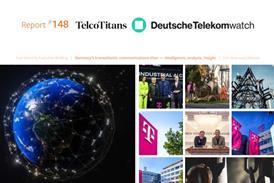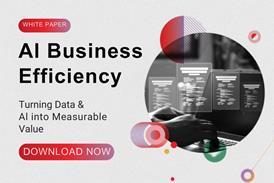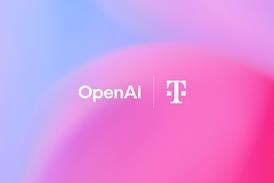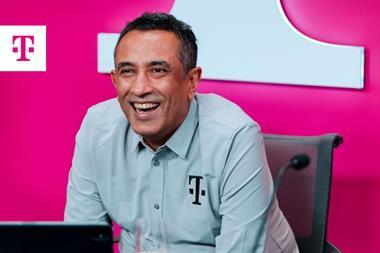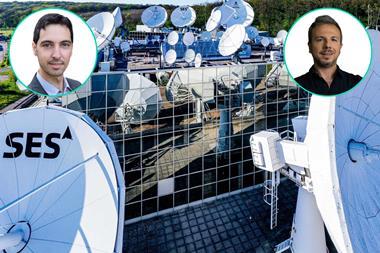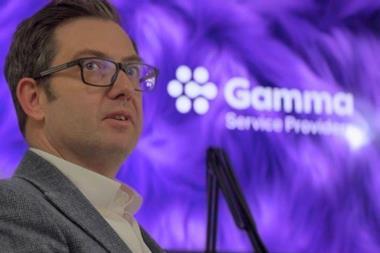- Many telcos are unable to maximise their AI return on investment because crucial data is trapped within fragmented, legacy BSS/OSS systems, a problem openly acknowledged by industry leaders.
- US operator Boost Mobile has overcome this challenge by partnering with Wavelo to build a Digital Operator Platform based on event-driven architecture (EDA), a technology common in other sectors but novel to telecoms.
- EDA liberates data by treating every system interaction as a discrete event, creating a dynamic source of truth that enables real-time decisioning, enhanced automation, and a superior customer experience.
- With its AI-ready architecture, Boost has gained a significant competitive advantage, while Wavelo and partners like BT Group are now exploring EDA’s potential for complex network use-cases such as the Internet of Moving Things.

During this year’s FutureNet World conference in London, a senior executive at one of the sector’s largest IT players raised the awkward subject of telcos’ legacy limitations, and how they could hinder maximisation of AI RoI.
Industry execs, he said, were more than willing to talk about “sexy” AI use-cases, but less keen to highlight “the problems we have — the underlying data, which is not allowing us to apply AI and GenAI efficiently”.
It is no secret that many telcos are still wedded to fragmented, patchwork BSS/OSS stacks, built up over generations of ambitious, well-meaning M&A transactions and tech upgrade projects.
Now, some are admitting that these often-siloed systems are acting as restraints around the data that could stymie innovative projects that can, utilising AI, help operators monetise large-scale network investment, fulfil customer experience improvement ambitions, and become more efficient.
As such, opportunities around the marriage of customer data and AI are being left on the table, because the necessary data is being ‘held hostage’ by these unwieldy legacy systems, making it difficult to extract to train models to act in real-time and improve engagement with clients. “For us, it really starts with the data”, said Wouter Stammeijer, Chief Operating Officer at KPN, also speaking at FutureNet.
“The telco has a lot of data. We all know that… We have a lot of customers that have a lot of data. It’s usually also quite long term in different parts of the company, in silos, which are difficult to get out… If you don’t have high quality data, AI can give false results. It can be misleading and people [won’t] rely on it, or dismiss it pretty quickly. So, the data foundation process is key.”
Stammeijer.
Disruptive Boost takes an alternative path
Fortunately, there are exceptions. One telco that claims to have overcome these hurdles and created a genuinely AI-ready BSS/OSS platform is US operator Boost Mobile.
Known as an innovative player willing to challenge industry orthodoxy, retail brand Boost Mobile was in July 2020 absorbed into DISH Wireless from rival T-Mobile US, as part of regulatory remedies accompanying the latter’s Sprint merger.
In doing so, DISH took on several million new customers, kickstarting a 5G-focused expansion of its wireless business. It then, in the subsequent months, added to its retail base with acquisitions of further wireless service providers Ting Mobile, Republic Wireless, and Gen Mobile.
“Around the same time”, said Kara Bouc, the brand’s Head of Product & Program Management, Boost moved to upgrade its IT capabilities and create a “leaner, faster, and more resilient” platform from which to strengthen its position in retail wireless.
A month later, alongside the Ting buyout, it announced a partnership with the latter’s parent, famed Canadian technology group Tucows, to make use of software from another of its businesses: then-embryonic telco data solutions subsidiary Wavelo.
True to Boost form, this strategic decision went against the grain — overlooking traditional go-to telco vendors and old-school iterative approaches to stack upgrades.
Most significantly, it saw Boost embracing Wavelo’s specialism, event-driven architecture (EDA) — a technology that, while widely adopted across other tech-savvy industries, was not part of the typical telecoms IT playbook.
Speaking during June’s DTW Ignite 2025 trade show in Copenhagen, Bouc dubbed the new architecture that Boost and Wavelo built together as a “radically simplified, agile, future-proof platform that’s ready for what’s next”.
How Boost rides event streams for flexibility and scalability
Wavelo frames ‘EDA’ as the transformative option for telcos because it can be rolled out as a ‘wrapper’ for legacy IT, rather than necessitating a costly, complex replacement exercise.
In an EDA-centric environment, ‘state’ changes within telco systems — such as activation of a new subscriber, a bill payment, or an add-on purchase — are each treated as individual ‘events’, instantly prompting the creation of unique decoupled records. These then form a distinct, constantly updating and evolving base from which telcos (and AI) can perform real-time decisioning, independent of the point solution from where the data originated or the application through which actions are taken.
Working with Wavelo, Boost created what it calls aDigital Operator Platform (DOP) to underpin customer experience (CX) and retail operations across the group’s multiple networks and brands.
“With event-driven architecture, every interaction is a signal in motion. If you take an upgrade or a billing or provisioning activity, it’s a signal that sets the stage for activities across the platform. An example is an MRC [monthly recurring charge] payment. When Wavelo sends us an event that a customer has successfully processed an MRC payment, it triggers multiple actions within our Digital Operator Platform.”
Bouc.
Boost’s Bouc told the event in Copenhagen that the DOP’s implementation had not just had CX benefits but a major internal impact, too. By separating off data from underlying BSS/OSS components, the provider had a “clear architectural blueprint” on which to engineer simpler processes and introduce more automation, she said.
“Instead of building heavy workflows, we focused on getting the architecture right. That work has dramatically reduced our need for manual intervention.”
Bouc.
For the same reason, Boost is now more responsive — whether in terms of speed-to-market for new services, or when solving problems.
Fewer issues occur with customer transactions, Bouc indicated, because the DOP was designed to enable high flow-through rates and ‘smart retry’ logic for those that do not complete. Further, each event is more easily observable, so can be ‘replayed’ to resolve problems or test and develop new capabilities within certain scenarios. This alone is very significant capability.
“Our resolution time is minimal. This architecture enables rapid recovery. All of our data is stored, logged, and error handling and recovery happen automatically.”
Bouc.
In February, Boost renewed the relationship with Wavelo for another four years, and now has plans to build on the DOP’s capabilities further, including with a “proactive” strategy on AI that the company hopes will drive major advantages over legacy-encumbered competitors, Bouc intimated.
“Many companies are struggling with outdated technology, which requires massive shifts to keep up and implement AI… We’re not just ‘ready for AI’ — our architecture gets us ‘ready for the next wave of AI’. This ensures systems can adapt proactively, delivering operational efficiencies and foresight, which leads to an exceptional customer experience.”
Bouc.
Justin Reilly, Chief Executive at Wavelo, framed this as part of Boost’s move “from defence to offence” with the brand, following the group’s recent re-acquisition by EchoStar Corporation. “They looked no further than our event-driven platform to fuel their growth strategy”, he told Tucows investors after revealing extension of the relationship.
‘It’s not that complicated’: overcoming EDA suspicion
Wavelo considers the Boost engagement to be the first significant application of EDA to a telco BSS/OSS.
This raises the question of why this capability has not been more widely adopted in the telecoms sector, given how it offers a powerful and timely solution for the headaches that many telecom operators are facing around digital transformation and utilisation of AI.

Hanno Liem, Chief Technology Officer at Wavelo, pointed to a combination of the telecom industry’s historic tendency towards over-engineering, and an interrelated case of classic not-invented-here syndrome. “The culture is very much, ‘if you don’t come from telecoms’, right? People say ‘you need to buy all these software packages’, and they’re really expensive. You don’t know what you don’t know”, he told TelcoTitans.
Boost, by contrast, has long been prepared to take the path-less-trodden when selecting suppliers and technologies, as seen in tie-ups with Fujitsu, Samsung, Mavenir and others to roll out a pioneering virtualised 5G network alongside wholesale relationships with AT&T and T-Mobile, after absorbing Boost’s assets.
Liem cited Boost Chairman Charlie Ergen’s “challenger mentality” and “disdain for the established players” among reasons for the decision to engage Wavelo and the wish to break through telco complexity.
Hacked to life: CTO’s tech nous behind Tucows’ EDA extension
Wavelo’s own formation was borne out of many of the same pressures that telcos themselves are facing on IT development.
Liem, a self-styled “1990s hacker” with a hinterland in Europe’s ISP sector, joined Wavelo parent and internet outrider Tucows in 2018, as CTO, where he immediately encountered a “very messy, fragmented” IT landscape, pieced together from M&A deal-making. Within Tucows’ internet domain business, for example, where Tucows is the second largest player globally, the task of interfacing with registries around the world ranged from linking with “really nice modern APIs” to “literally faxing a piece of paper to some guy”. “We counted the number of programming languages in the company when I started, and it was more than 80”, he recalled. The move to Tucows also marked Liem’s return to the telco sector from the tech world, given Tucows’ presence in fibre and mobile.

EDA “wasn’t that groundbreaking to me, if that makes sense, but it is groundbreaking in the telco industry”, Liem said. “Uber has been doing this I don’t know how long. Everybody that does ‘events’ at scale typically uses Kafka as their infrastructure layer. It’s not that interesting! What we did is build a telco-specific software layer on top of that, and that is very much informed by our experience with [industry-adjacent] domain registries”. Given Tucows’ existing deployment of EDA, “we’ve been eating our own dog food for a long time”, Liem added.
Being on the spot when it comes to data-driven AI gain
Wavelo is particularly keen to champion EDA as a mechanism to reduce risk, rather than raise it.
Liem summed up the tech as offering “reliable and robust, distributed transaction processing at scale”, and particularly apt when not all applications are under direct control. Forthright, he said, EDA is just “not that hard — it’s a bunch of APIs”.
“Let’s not make things more complicated than they are. There’s always a bit of a tendency for people to say that it’s complicated because they want to squeeze money out of it.”
Liem.
Liem highlighted data lock-in as another thorny issue that EDA addresses.
“Telcos have a lot of systems that are often monolithic, and even if they’re a set of microservices, they each have their own database.
Everybody’s really protective about their data, and say ‘no, no, no, it’s my data: you need to go to my API to do it right’.
What we’re saying is ‘we’re liberating the data’ out of those silos. We do not have a big database at the centre of the Wavelo platform. It just doesn’t exist. Our ‘events’ are at the core: they are the ‘source of truth’, not the databases themselves.”
Liem.
This liberation of data is particularly key for AI, highlighted Gary McDonald, Head of Product Management at Wavelo and telecom industry veteran.
EDA offers “real-time, dynamic access” to data that in traditional telco IT architecture, is “sitting statically in the customer systems and has to be pulled out into an AI model”, he said.
“Maybe by the time that’s done, the data is outdated. So a lot of times, you’re missing that context in terms of ‘why’ that data point was generated and ‘when’ it was generated. With an event-driven architecture, you can apply more real time data.”
McDonald.

Conscious of telco conservatism, Wavelo stresses that EDA can be implemented on a step-by-step basis. Boost, for instance, initially onboarded one million Boost subscribers to the DOP, before migrating the next six million.
Both McDonald and Liem highlighted that because of the modular nature of EDA, users can keep running their old system and Wavelo’s in parallel for as long as they want. A common confidence-building scenario is an operator choosing to send a small slice of traffic into the events stream until it is reassured over resiliency, they added.
“Obviously, the telecoms industry needs that flexibility now more than anything.
With us they can liberate their own data, add additional value, and build that into their existing stack in a way they couldn’t do before. They can still run their existing billing operations. They can still do their existing provisioning capabilities, but we give them something different that adds value and innovates their existing stack, and then maybe eventually over time, they start to move away from their [legacy, siloed] stack.”
McDonald.
- Free Your Data: showcasing the simplicity and speed with which its EDA solution can be evaluated and adopted, Wavelo has packaged a baseline of components and services for an operator to quickly get started on unlocking and liberating their legacy data. With the modularity, and potential for phased adoption, there is no need to change or switch off any existing system, nor requirement to deploy a new BSS application.
Future opportunities in networks as IoT and AI proliferate
So far, in the telco space, Wavelo has largely been applying event-driven technology to customer data-related challenges and opportunities, and giving value marooned within operators’ BSS systems an escape route. But the provider sees significant potential in the realm of networks, too — especially around use-cases that require rapid processing of vast amounts of data, and where traditional telco systems are not up to the task.
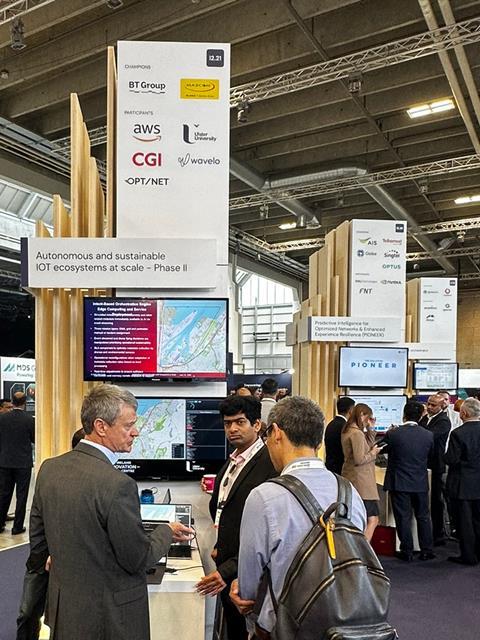
Now in its second phase, and recently showcased at DTW Ignite, the project utilises Wavelo’s platform as the kernel of its proposed solution, offering up Kafka -based data streams from which devices and services can be managed, activated, and billed in real-time.
This solution, in turn, feeds this data into a system of four AI agents provided by technology consultancy CGI, which are tasked with monitoring connectivity, analysing energy consumption, delivering actionable recommendations (such as the removal of a device), and interfacing with the system operator. Another key component is an AI engine from Dutch developer OPT/NET that analyses the data to flag anomalies and recommend remediation measures. BT and AWS are the connectivity and cloud infrastructure partners, respectively.
As well as developing a system that could boost the efficiency and sustainability of these IoMT deployments, the Catalyst partners have indicated the project will produce a standardised telemetry API for device operators, and in turn help address the connected-device space’s famed interoperability issues.
For the purpose of development and demonstration, the group has concentrated on a theoretical scenario of managing autonomous drones within a smart-port. To run tests, it has been using a simulation environment at Ulster University, where BT has a labs tie-in, and is in close proximity to one of the UK operator’s flagship 5G private network deployments, at Belfast Harbour.
But those involved see relevance to any organisation that faces the challenge of running “thousands of moving things that share the same infrastructure”, such as logistics providers, manufacturers, or local authorities. Their system, for example, could be applied to the task of dynamically routing autonomous buses and trams within a town or city, or orchestrating automated assembly lines in factories. Ultimately, the Catalyst’s partners have indicated they plan to perform a “real-world” showcase of their solution in a smart-city or smart-port.
Wavelo’s McDonald noted that IoMT systems can only be managed in a truly effective and efficient way if data orchestration (and analytics) can be enabled in actual real-time — and that given the volume of data involved, this requires fresh approaches and thinking.
“IoMT is constantly changing, constantly moving. The drone is consuming different bandwidth based on whether it is in patrol-mode or just sitting at the base station, pinging the network. There are all sorts of data coming back from the device that needs to be managed, such as for energy optimisation. If you’re looking at a static data set, you’re collecting all that data, and maybe by the time the drone gets back to the base station it’s sitting in a database somewhere and being used to train the AI model. But now, with the Catalyst, that can all happen dynamically.”
McDonald.
Topics
- 5G
- AI/GenAI/ML (artificial intelligence, agentic, machine learning)
- AT&T
- Automation
- BSS/OSS
- BT Group
- Charlie Ergen
- Customer/User experience (CX/UX)
- Data
- Digital transformation
- DTW Ignite (TM Forum)
- Events
- Eventwatch
- FutureNet
- Gary McDonald
- Hanno Liem
- Industry Voice
- IoT (Internet of Things, M2M)
- Justin Reilly
- Kara Bouc
- KPN
- Technology
- Thought Leadership
- TM Forum (TMF)
- T-Mobile US (DTAG)
- USA
- Wouter Stammeijer



